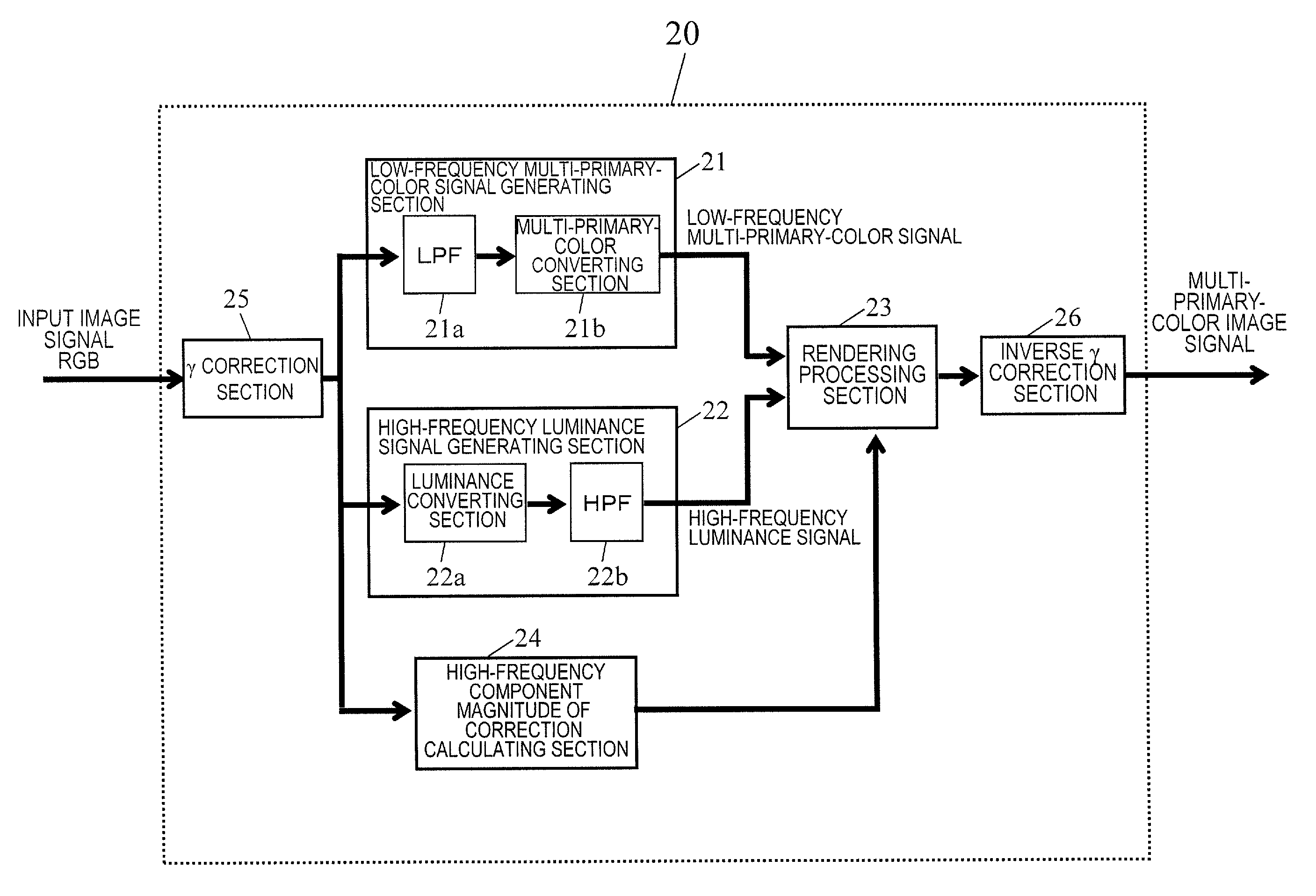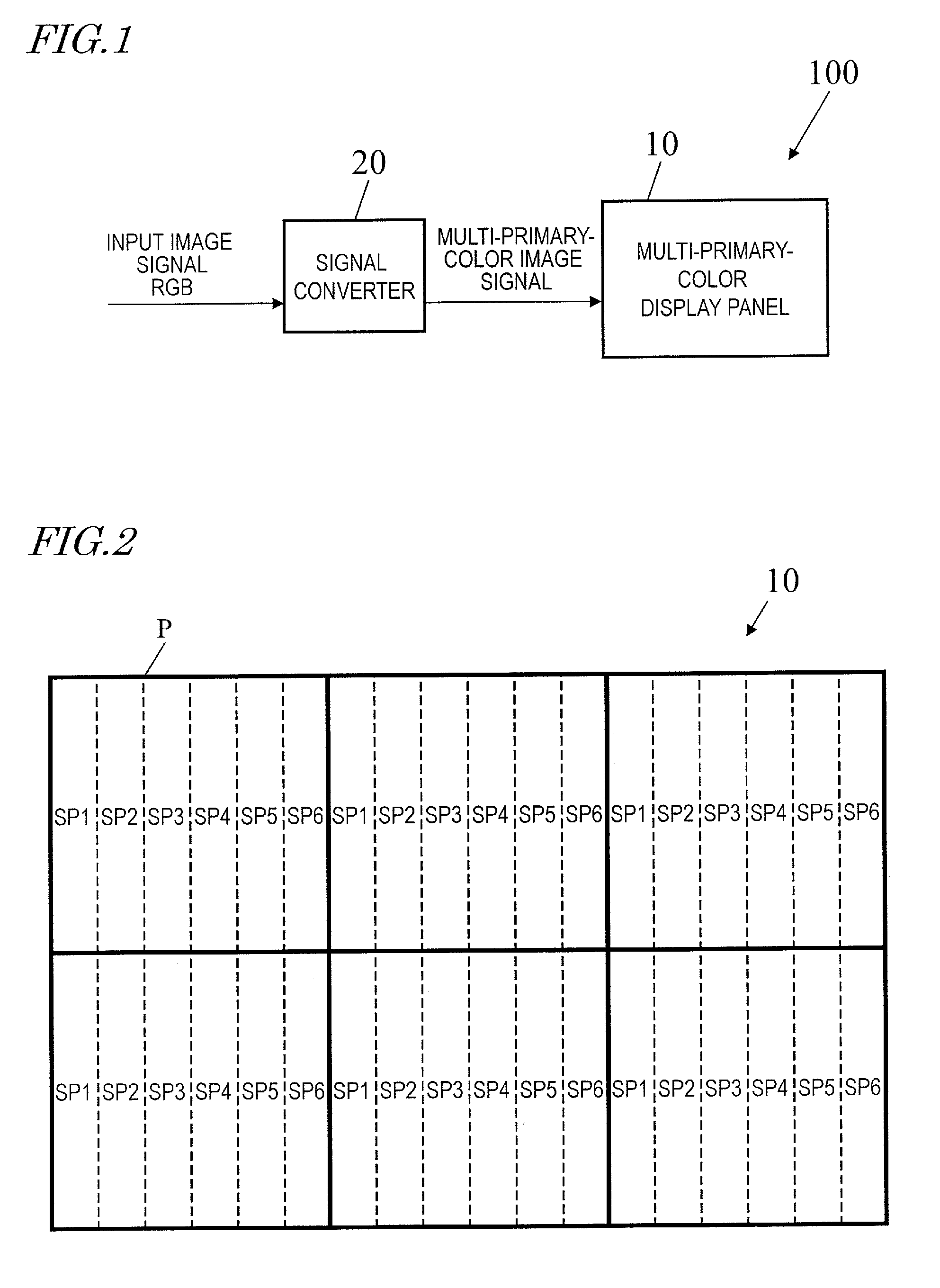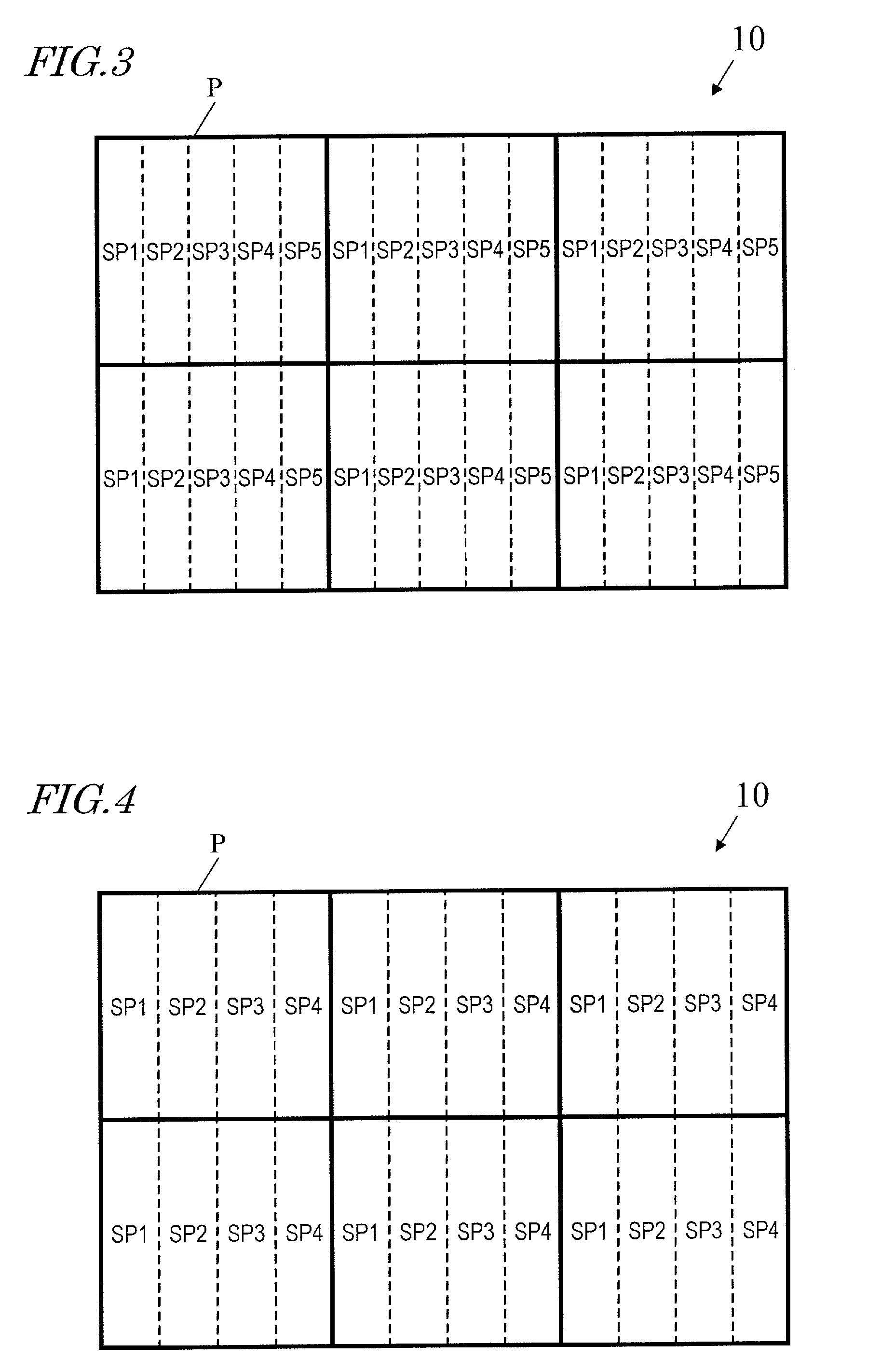Multi-primary colour display device
a display device and colour technology, applied in static indicating devices, cathode-ray tube indicators, instruments, etc., to achieve the effect of increasing resolution, and reducing the size of each subpixel
- Summary
- Abstract
- Description
- Claims
- Application Information
AI Technical Summary
Benefits of technology
Problems solved by technology
Method used
Image
Examples
example 1
[0119]In a first example, the magnitude of correction calculating section 24 calculates the magnitude of correction according to the hue of the color specified by the input image signal. The magnitude of correction calculated by the magnitude of correction calculating section 24 has a positive value if the color specified by the input image signal is an expansive color and has a negative value if the color specified by the input image signal is a contractive color. Also, the magnitude of correction calculated by the magnitude of correction calculating section 24 is zero if the color specified by the input image signal is an achromatic color.
[0120]In this description, the “expansive color” is a color that makes something look bigger than its actual area, and is a warm color such as the color red. On the other hand, the “contractive color” is a color that makes something look smaller than its actual area and is a cold color such as the color blue.
[0121]Hereinafter, it will be describe...
example 2
[0146]In a second example, the value of the hue H is calculated based on the colors red, green and blue grayscale levels R, G and B represented by the input image signal (i.e., input grayscale levels). To calculate the hue H, an angle to be defined by chromaticities a* and b* may be used after the RGB color space has been converted into the L*a*b* color space.
[0147]Also, in this example, a lookup table (LUT) is referred to based on the calculated value of the hue H, thereby determining the magnitude of correction C(n). The LUT stores data about the magnitude of correction associated with the hue H. Optionally, as reference keys to the LUT, not only the hue but also the saturation may be used in combination.
[0148]Alternatively, the magnitude of correction C(n) may also be determined directly by using the RGB values of the input image signal as a reference key.
example 3
[0149]According to the techniques of Examples 1 and 2 described above, the magnitude of correction C(n) is calculated with respect to a pixel of interest alone. However, the magnitude of correction C(n) may also be calculated based on the difference between the pixel of interest and pixels surrounding it. For example, a pixel of interest may be compared to two pixels which are located on the left- and right-hand sides of the pixel of interest, and then given a positive magnitude of correction if its color has the greatest degree of expansion or a negative magnitude of correction if its color has the greatest degree of contraction. To carry out this method, the degree of expansion or contraction should be determined uniquely based on the RGB values of the input image signal. For that purpose, the LUT may be referred to after the value of the hue H has been calculated.
PUM
 Login to View More
Login to View More Abstract
Description
Claims
Application Information
 Login to View More
Login to View More - R&D
- Intellectual Property
- Life Sciences
- Materials
- Tech Scout
- Unparalleled Data Quality
- Higher Quality Content
- 60% Fewer Hallucinations
Browse by: Latest US Patents, China's latest patents, Technical Efficacy Thesaurus, Application Domain, Technology Topic, Popular Technical Reports.
© 2025 PatSnap. All rights reserved.Legal|Privacy policy|Modern Slavery Act Transparency Statement|Sitemap|About US| Contact US: help@patsnap.com



